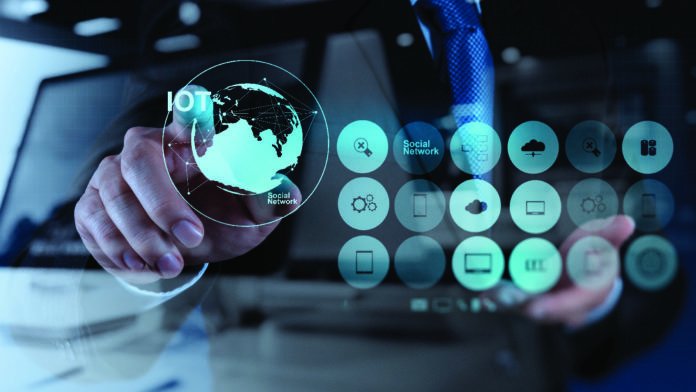Almost two-thirds of the global businesses implemented IoT applications in 2019, in spite of the cyber-security risk
The global market of Internet of things (IoT) platforms is rapidly increasing across all industries. As per Fortune Business Insights, the global Internet of Things market was valued at US$ 190 billion in 2018, and by 2026, it is projected to reach US$ 1, 102.6 billion – exhibiting a CAGR of 24.7% from 2019 to 2016.
Artificial Intelligence Trends for the Modern Enterprise
Clearly, as IoT holds remarkable potential in the IT and other technology business operations, it is only going to expand moving forward. The latest report by Kaspersky, titled “With superpower comes super responsibility: Benefits and challenges of IoT in business” has propounded some significant insights. About two-thirds of companies, 61% have implemented IoT applications last year despite cyber-security risk. With the IT and telecom industry, IoT adoption is growing year-on-year globally, and 71% reported using these devices in their business. Other sectors are also closing the usage gap, with finance at 68%, healthcare at 66%, and hospitality with at 63%. All of these sectors witnessed an increase in of about 10% IoT operations, between 2018 and 2019.
The report stated, “The growing rate of IoT increases the business need for data protection and prevention from cyber-incidents. In the first half of 2019, Kaspersky researchers detected 105 million attacks on IoT devices through honeypots.” The reliability of the suppliers cannot be avoided, and more than 36% of companies allow third parties to access their IoT platforms. Nearly 28% of companies experienced incidents involving non-computing connected devices using IoT platforms in 2019. It is higher than those affected by the crypto-mining attacks (26%), infrastructure incidents involving third parties (27%), and incidents involving data sharing suppliers (27%).
Grigory Sizov, Head of KasperskyOS Business Unit, Kaspersky, mentioned in a statement, “IoT is a powerful business enabler but to reap its benefits organizations need to put in a considerable amount of effort. It demands dedicated business processes, as well as expertise, to ensure it is effectively implemented…As the survey shows, cybersecurity is also a question that needs resolving in the IoT space – in terms of security of equipment, technical and organizational protection measures and data privacy, as well as other factors.”
5G and IoT – The Strongest Tools for Transformation to an Advanced Digital World
Gartner predicted there would be approximately 25 billion IoT connections by 2025. The booming of the IoT ecosystem is lucrative for enterprises, offering a new world of possibilities – which includes advanced revenue streams and enhanced efficiency. To secure business-critical assets, it is advised to implement cybersecurity solutions that are designed to analyze network traffic and detect attacks – covering traffic from IoT devices and integrating the analysis to the business security system.









